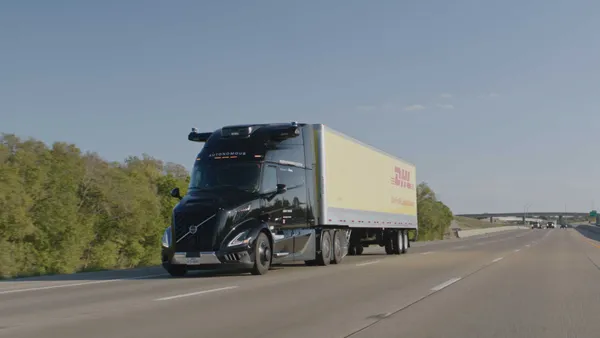Dive Brief:
- A recent survey by Alix Partners found 69% of manufacturing respondents were considering nearshoring as an option to meet the increased demand from the U.S. and Europe, Supply Chain 247 reported last week.
- Yet, offshoring practices have led the labor force to adapt to less labor-intensive jobs, which is shifting cost-benefit analyses for outsourcing production. The solution lies in automation, according to the report.
- Most companies automate to reduce labor costs, control quality, improve throughput and replace labor-intensive tasks altogether. Increasing automation will require heavy capital investment, not only in systems, but also in attracting and maintaining qualified staff able to maintain the technology.
Dive Insight:
The rise in automation is almost always linked to greater precision and reduced labor costs. Yet, the need for skill upgrades for existing employees facing automation upgrades must be factored in to the alleged savings to be gained.
Workers trained in robotics maintenance are still uncommon, particularly in the supply chain field. Although technology and manufacturing apprenticeships are making a comeback, the effort is still fresh, meaning that the total cost of automation, including training, is still high. A perceived value in automation continues, however, even when improved precision and safety are not required.
While the incorporation of robotics holds our fascination as humans, it is easy to overlook some of the challenges to employing robots. There's a high initial investment coupled with an ongoing cost for maintenance. As with any machine, breakdowns do happen, so the more important the task, the greater the need for more than one robot, not to mention redundancies necessary to ensure that workflow is not hindered.
One area where robotics may be slow to infiltrate is in customer-facing interaction. Consumers could easily dislike the experience of an all-robotic fast food chain, for example, in which case lost business would negate the salary savings. What is still most likely is that robots will serve best invisibly, such as in manufacturing.













